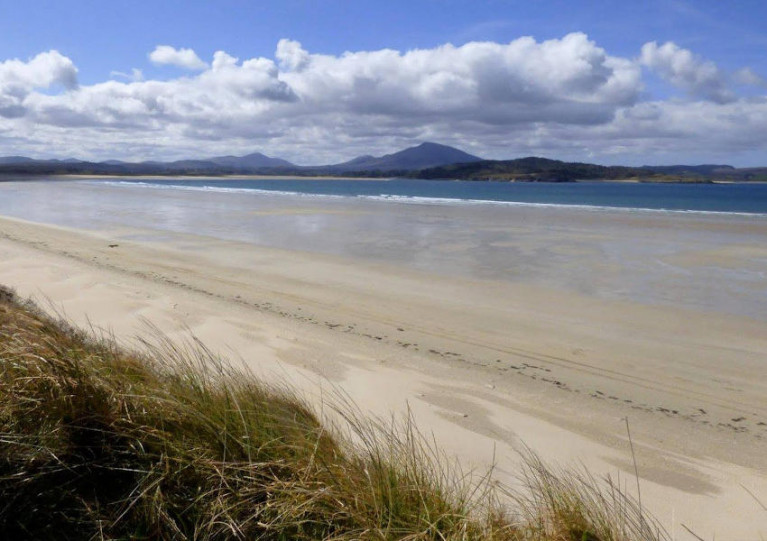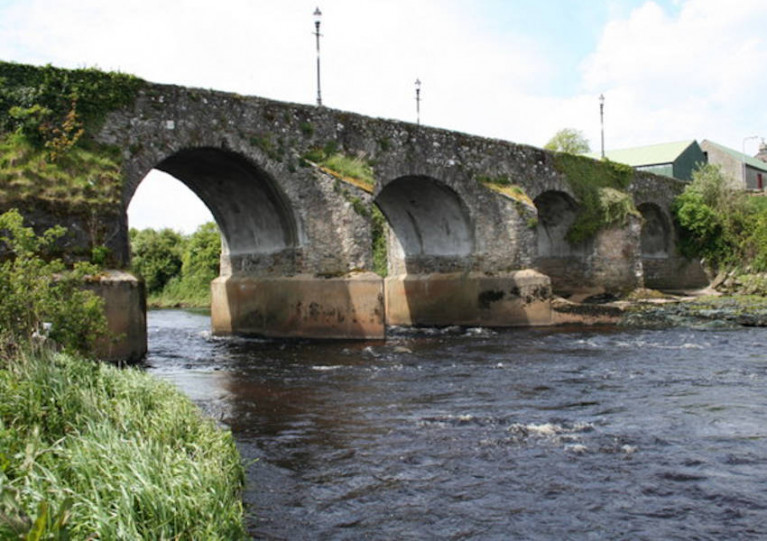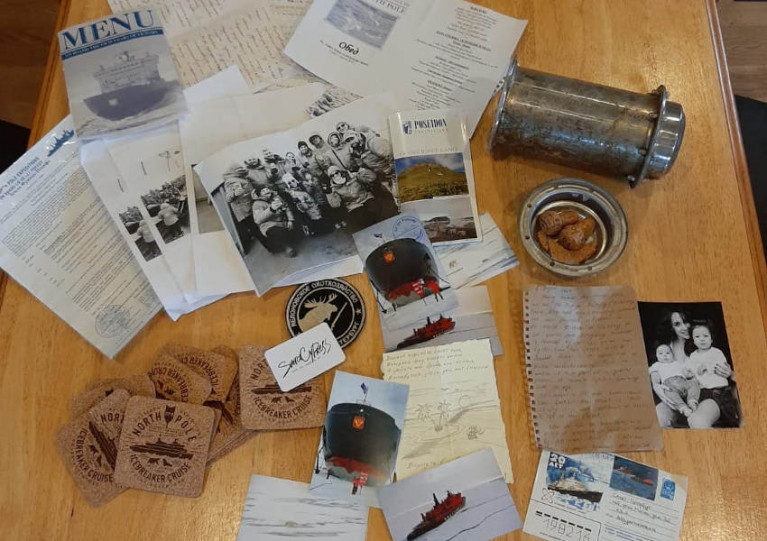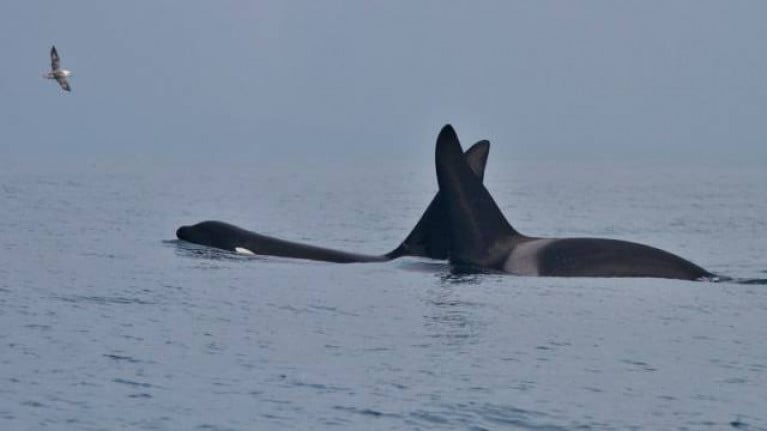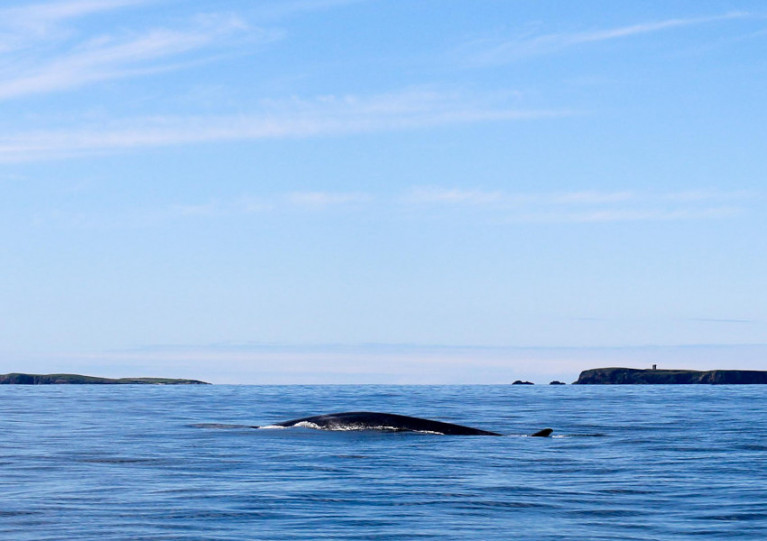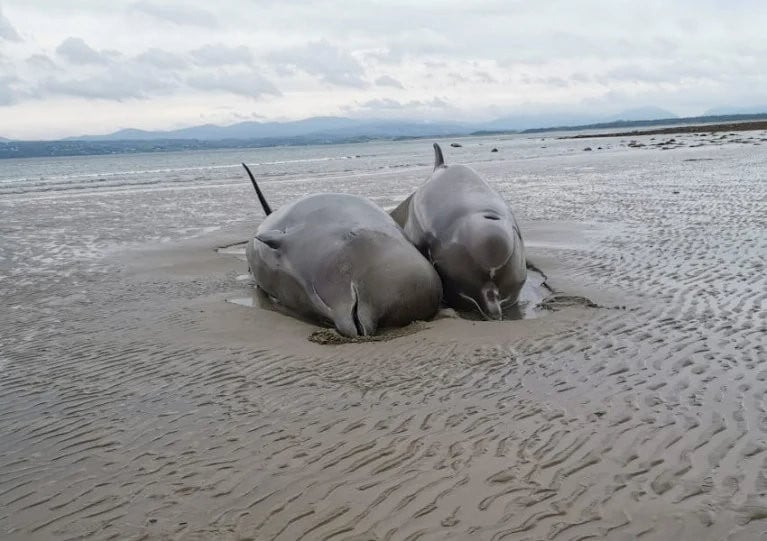Displaying items by tag: Donegal
Recent Whale Strandings No Longer Considered ‘Unusual’, IWDG Says
The Irish Whale and Dolphin Group (IWDG) says it’s clarified its opinion on recent whale strandings in Donegal, explaining that the evidence does not suggest an “unusual mortality event” or UME.
It has been feared the strandings of two female sperm whales — at Maghery and on Malin Head respectively — were linked to Russian military exercises in the North Atlantic, as Afloat.ie reported last weekend.
But upon reviewing the data of marine wildlife strandings on the Irish coast between 15 and 21 February, including a female Cuvier’s beaked whale and a female long-finned pilot whale, the IWDG says that the incidents do not deviate from the expected annual stranding figures.
“Before any claims can be made calling this a UME or linking these current deaths to the military testing, additional evidence is needed,” IWDG strandings officer Stephanie Levesque said.
“We must wait to see if any further deep diving species wash up over the next few weeks as these numbers themselves currently are not out of the ordinary.”
However, Levesque added: “Two female sperm whales washed up at the same time is unexpected as most stranded sperm whales in Ireland are mature males.”
Meanwhile, it’s believed that “souvenir hunters” may be responsible for removing jaw bones from the two female whales washed ashore in Donegal.
Levesque told Donegal Live that such practice is common but it’s not known why.
“I don't know who does, but it is something that happens with sperm whales when they strand — the lower jaw is the first thing to go,” she said. “I don’t know if people think they are worth something.”
Donegal Live has more on the story HERE.
Fears That Donegal Whale Strandings May Be Linked to Russian Military Drills
It’s feared that at least one whale stranded in Donegal in recent days may have died as a result of Russian military exercises in the North Atlantic.
According to The Irish Sun, a marine wildlife expert investigating the stranding of a female whale at Maghery on Wednesday (16 February) said it appeared “deflated” and that its internal organs had “liquefied”.
Stephanie Levesque, a strandings officer with the Irish Whale and Dolphin Group (IWDG), noted that it is not yet confirmed how recently the animal died but said: “We can’t rule anything out at this point.”
It’s understood that sperm whales, which can dive as much as 800 metres in search of food, can risk their lives by surfacing too fast when disturbed by sonar often employed by military vessels.
But disturbances caused by this week’s double whammy of Storm Dudley and Storm Eunice may have played a significant role.
A second sperm whale found at Malin Head on Thursday (17 February) was also deemed unusual.
Commenting on social media, the Ocean Research and Conservation Association (ORCA) Ireland said: “What stood out was this animals teeth were very worn! Sperm [whales] are the largest toothed predator in the world.”
Before Russia agreed to move its planned military exercises out of Ireland’s Exclusive Economic Zone, Minister of State for Heritage Malcolm Noonan warned that the activity could have “devastating consequences” for marine mammals in the area.
Such concerns prompted the IWDG to back the call from the fishing industry for a moratorium on any and all military exercises within the Irish EEZ.
Public Consultation on Proposed Restriction of Salmon Draft Net Fishery on Loughros Estuary
Inland Fisheries Ireland (IFI) is seeking submissions in relation to a proposal to restrict the commercial salmon draft net season on the Loughros estuary in Co Donegal in 2022 to fishing between 1 and 21 July.
The proposed changes are to reflect the limited overall salmon quota available for 2022 and the number of commercial draft nets available.
An overall surplus of 340 salmon has been advised for 2022 to be divided between the commercial draft net and recreational angling sectors.
The commercial draft net season for the fishery normally opens on 12 May and closes on 31 July.
A copy of the draft proposed bye-law is available for public inspection at the IFI offices in Ballyshannon, Co Donegal as well as on the IFI website HERE.
Any person wishing to make observations on the proposed regulation may make submissions before 5pm on Friday 18 February, either by email to [email protected] or to the address below:
Loughros estuary Commercial Salmon draft net fishing season 2021 Public Consultation,
Inland Fisheries Ireland,
Station Road, Ballyshannon,
Co Donegal
F94 WV76
Works to restore watercourses impacted by a bogslide in the North West last year could take “a number of years” to complete, according to the Loughs Agency.
As previously reported on Afloat.ie, anglers in Donegal and Tyrone fear that the peat slippage near a wind farm development at Meenbog has made an important salmon fishery uninhabitable.
Video of the incident, which saw thousands of tonnes of bogland slide into the River Derg system, went viral on social media in early November 2020.
A working group was established in the wake of the incident and this multi-agency, cross-border group continues to meet on an ongoing basis to coordinate the plan of action, the Loughs Agency says.
“Construction works on the windfarm site where the peat slide originated remain suspended, with the exception of the maintenance of measures required to mitigate the threat of further pollution or those required to safeguard health and safety,” it adds.
Following a direction to the windfarm developer from the Environment Protection Agency (EPA), an updated assessment by independent consultants of peat stability on the site is currently under way.
In addition, a “phased approach to the restoration of areas impacted by the peat slide” has been adopted, the Loughs Agency says.
The first phase began in the last few weeks, undertaken by the windfarm developer under direction of Donegal County Council and the Northern Ireland Environment Agency, and involves restoration of the lower reaches of the Shruhangarve stream and a planting scheme “to mitigate against the deterioration of the peat slide scar”.
The Loughs Agency says it has appointed a fisheries scientist to coordinate further restoration works that may be required for the Mourne Beg and other rivers downstream, and which may require statutory consent.
But it also advises that “given the seasonal restrictions that may apply”, such remediation works “will take a number of years to complete”.
Beaked Whale Carcasses Stun Visitors to Co Donegal Beach
Visitors to a beach recently named among the 10 best in Ireland were shocked to discover the remains of three whales washed up on the strand, as the Irish Examiner reports.
The three carcasses found on Trá Mór in Donegal at the weekend are understood to be Cuvier’s beaked whales, a deep-ocean marine wildlife species that is rarely spotted in the wild and which was at the centre of a concerning mass stranding event two-and-a-half years ago.
Trá Mór is included, along with Ballymastocker Bay on the nearby Fanad Peninsula, in Lonely Planet’s list of the 10 best beaches in Ireland, as previously reported on Afloat.ie.
Bogslide Threat to Important Salmon River in North West
Anglers in Donegal and Tyrone fear a recent bogslide near Ballybofey has made an important salmon river uninhabitable for fish.
Footage of the peat slippage on Mourne Beg at the Donegal/Tyrone border, which went viral on social media over the weekend, shows some of the thousands of tonnes of bogland that slid into the River Derg system.
And according to BreakingNews.ie, a local angling representative said one dead fish had already been found ahead of more they expect to discover in the coming days.
Peat slippage near Meenbog Wind Farm, south of Ballybofey in Donegal. #Meenbog ? pic.twitter.com/YEQSLMfqQ7
— Mark Rooney (@rooneymobile) November 14, 2020
The Loughs Agency said its staff are “evaluating the environmental effect” of the incident along with Donegal County Council and other agencies.
Surfers in Donegal Surprised to Discover Time Capsule from the Arctic
Two surfers in west Donegal recently made a remarkable discovery in the form of a time capsule from a Russian polar expedition.
As RTÉ News reports, Conor McClory and Sophie Curran initially believed the metal canister they found on the shoreline at Cnoc Fola might be some kind of explosive device.
But upon translating the text etched on its site, they were relieved to find it was safe to open — and it revealed a treasure trove of details about a voyage on board a Russian icebreaker in the Arctic in 2018.
It also included a prediction written in English that it would be a long time before the capsule was discovered, having been placed in Arctic ice.
But it took just over two years for the canister to reach Ireland’s North West Coast nearly 4,000km away.
RTÉ News has more on the story HERE.
NI Surfer’s Close Encounter With Killer Whales Off Donegal
A surfer from Northern Ireland got more than he bargained for when he was chased by a pod of killer whales off Donegal last week.
As the News Letter reports, Derry man Ryan Vail was catching waves off Culdaff on the Inishowen Peninsula last Friday (11 September) when he found himself surrounded by the orca pod consisting of two adults and three juveniles.
Orcas are a rare sight in Irish inshore waters, but the marine wildlife are no strangers to Donegal.
A pod resident in western Scotland has been spotted in Lough Swilly before, and more recently in Strangford Lough, but it has not calved in many years — suggesting these visitors may come from elsewhere.
“I’m well used to the water and have seen basking sharks, dolphins and porpoises, so I knew it definitely wasn’t one of them,” Ryan said.
“I knew what I was looking at, so I also knew I shouldn’t be this close! So, there was a wee bit of panic.”
And that panic only grew when one of the smaller orcas — “the size of a Transit van” — made an aggressive dash for Ryan on his board.
The News Letter has more on the story HERE.
IWDG Confirms First Validated Fin Whale Sighting For Co Donegal
The Irish Whale and Dolphin Group has conformed the first validated sighting of a fin whale off Co Donegal.
Liz Morrow captured images of the solo large whale in Donegal Bay off Slieve League earlier this month, estimating it to be around 18 metres in length.
Fin whales are a common occurrence in Ireland’s South West and the Celtic Sea, but have never before been spotted in the inshore waters of the colder North West.
However, with the later sighting of a humpback whale breaching off Malin Beg, it could be a sign that larger marine wildlife are exploring new territory north of Sligo.
“Any large whales that simply look too large to be a minke or humpback and produce a powerful columnar ‘blow’ on surfacing, should be considered as likely candidates,” the IWDG suggests.
“They will often be accompanied by common dolphins who hunt the same sprat and herring shoals and they never lift their tails before diving.”
Suspected fin whales are best approached from the right side and photographed at the head and rostrum “which should reveal the diagnostic lower white right jaw”.
It has emerged that the deadly mass stranding of bottlenose whales in Donegal was preceded by two live strandings in the Faroe Islands two days prior.
And it’s led experts at the Irish Whale and Dolphin Group (IWDG) to suggest the marine wildlife incidents might be linked and “part of a much wider event”.
The group adds that images of two Northern bottlenose whales — of the same species that died in Donegal — were captured the next day in Scotland as far inshore as Greenock Harbour, on the Clyde west of Glasgow.
More recently, two of the deep water cetaceans have been seen in the North Sea off Norfolk, and two others were spotted at the Netherlands’ Eastern Scheldt.
“Clearly something is happening to this group of whales we know so little about,” the IWDG says, adding that the situation also “demonstrates the need for a response protocol” for similar strandings in Ireland.



























